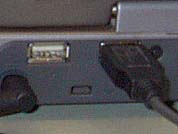
| Jean LeLoup & Bob Ponterio SUNY Cortland © 2013 |
Desktop videoconferencing over broadband Internet connections offers audio and video quality capable of supporting remote instruction in languages. Software applications such as Skype include utilities for sharing full screen or individual windows that let teacher or student share authentic materials or student work, providing a context for interactive communication or feedback supporting improved accuracy.
| Current webcams come with proprietary software and attach to the computer via a USB connection (high speed serial connection). |  |
 |
Free videoconferencing software, such as Skype, Google Hangouts, Facetime, MSN Messenger, and a host of others, is designed to allow face to face interaction in real time. The current software can also do much more. Skype can also allow the caller to leave a video message, much as one would on an answering machine... a video answering machine. Some programs can allow multiple participants. The programs can now interface with voice telephone and telephone text messaging as well. All of these options can provide new ways for teachers and students to communicate with native speakers in other countries. |
We are using Yahoo Messenger in our example, but the other software mentioned works well. The software manages a list of contacts who also have the saftware installed. Clicking on one of these contacts allows us to establish instant messaging, voice chat, and webcam viewing (among other functions that we won't go into here).
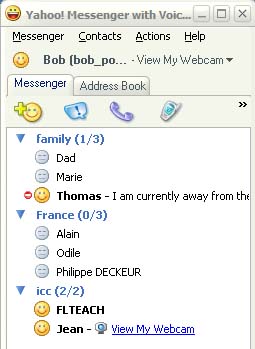 |
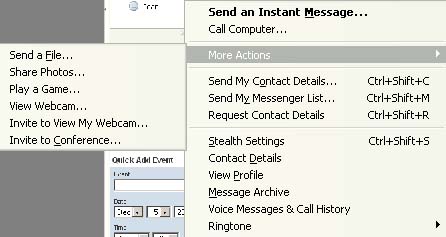 |
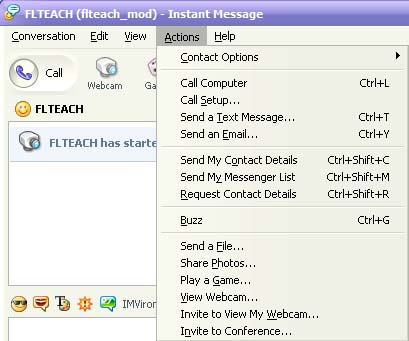 |
A variety of Actions are available during an instant messaging session. |
| With an instant messaging window open, each person sees the text typed by the other. Using a microphone and headset or speakers, a voice chat is possible. Each participant can turn on the webcam for video exchange as well. | 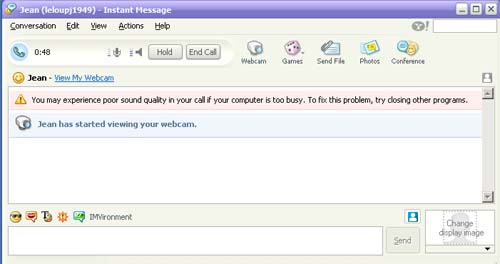 |
 |
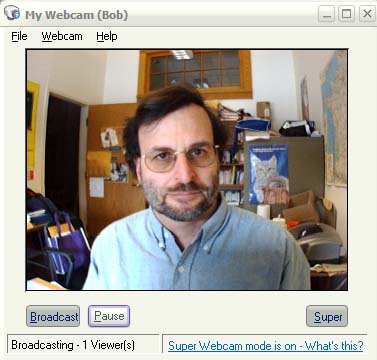 |
http://www.imcapture.com/IMCapture_for_Skype/
Google+ Hangouts
Yahoo Messenger
Skype